
Deutsch-Chinesische Enzyklopädie, 德汉百科
 Weltkulturerbe
Weltkulturerbe
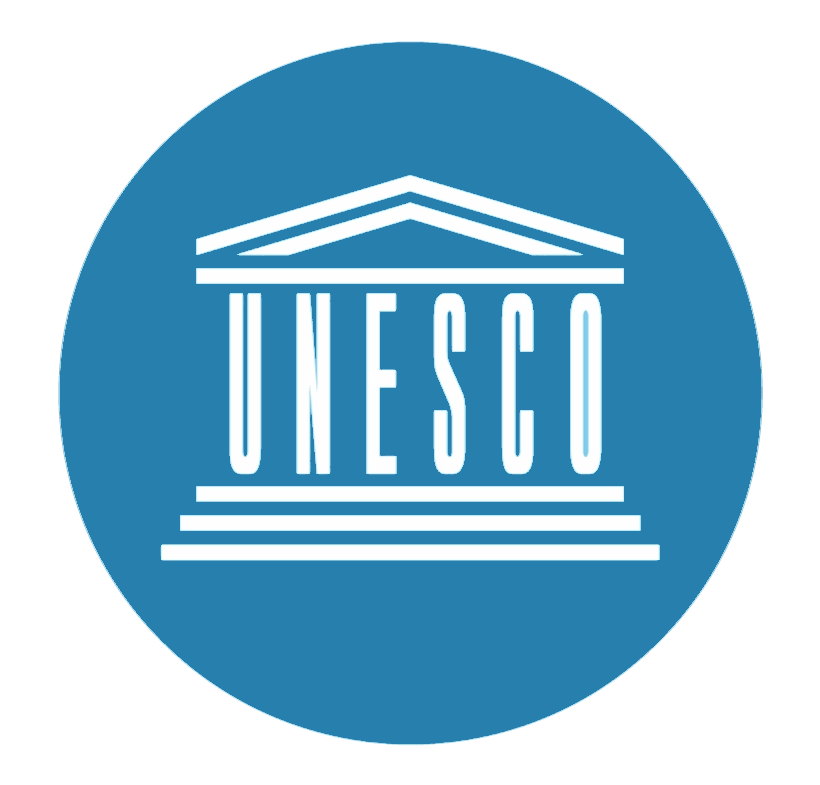

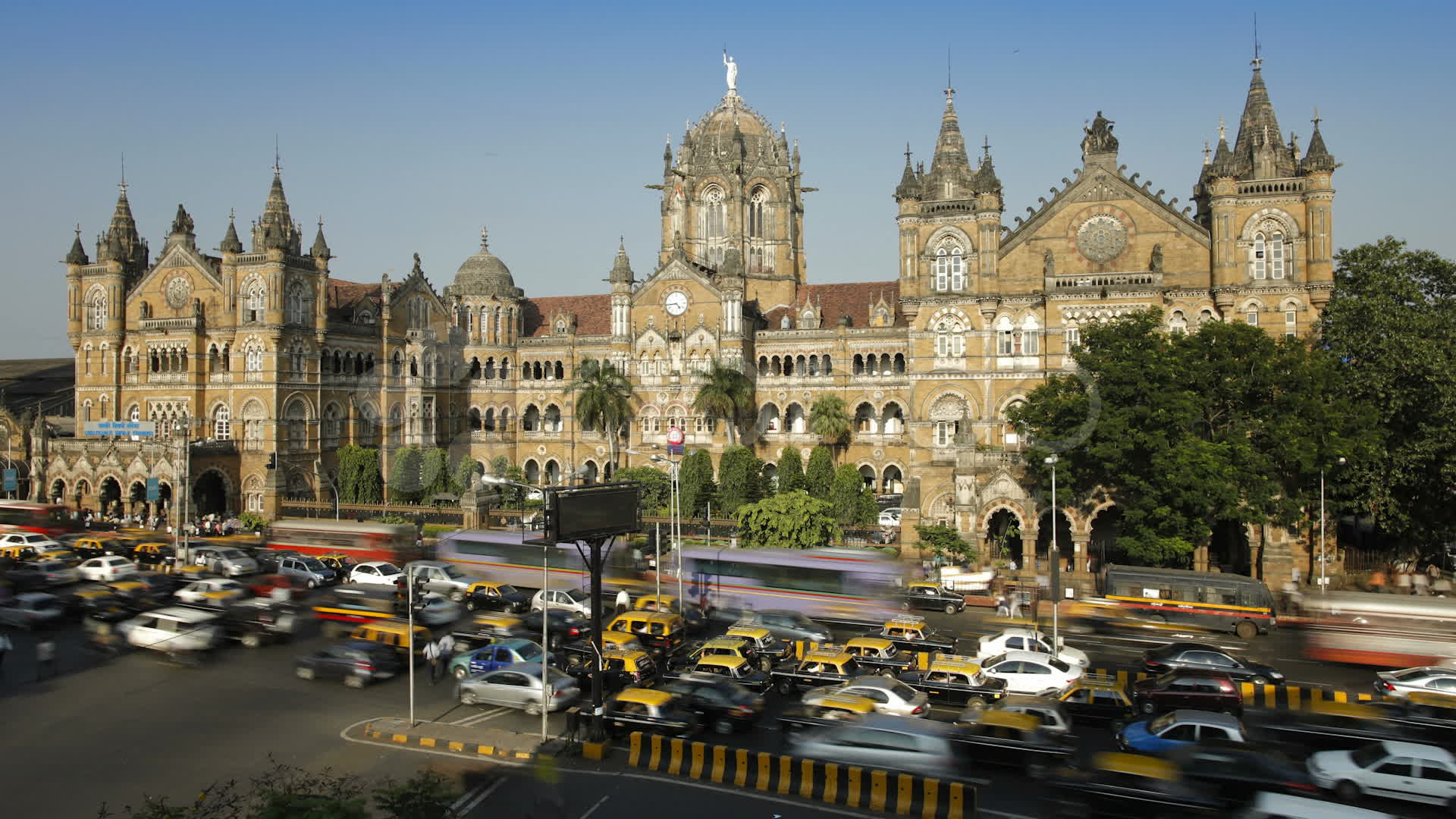

(Quelle:http://www.foto-hamburg.com)
汉堡智利大厦是德国汉莎汉堡州第一座商贸建筑,建于1922 - 1924年,是德国表现主义建筑风格的代表作,被列为联合国世界文化遗产.
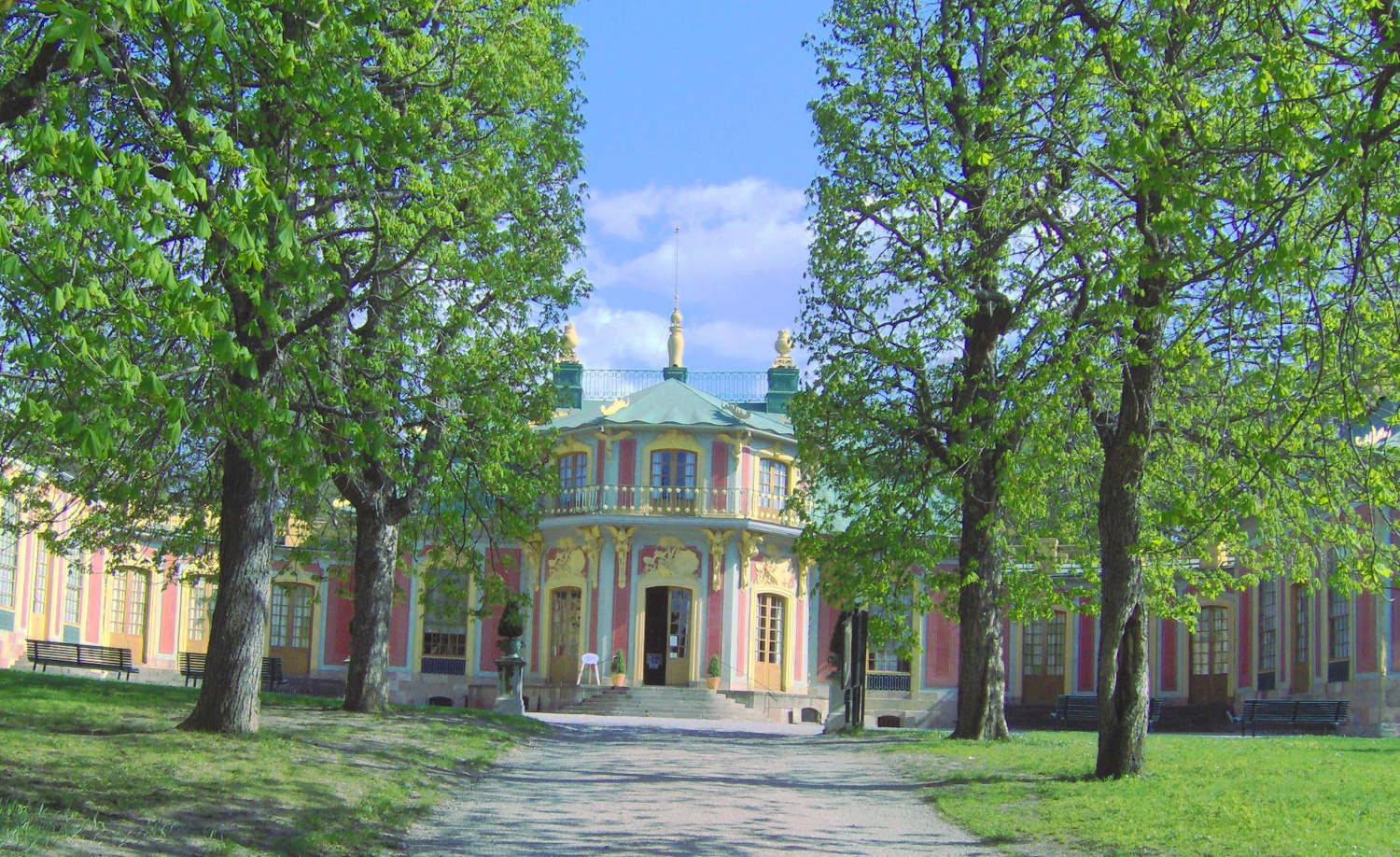
One July evening in 1753, Queen Lovisa Ulrika was surprised with a fantastic birthday present. In the far section of Drottningholm Palace Park, King Adolf Fredrik had secretly had a summer palace built in the Chinese style. At that time, all things Chinese were the latest fashion.
The East India trading companies brought large quantities of tea, spices, silk, porcelain and exclusive works of art to Europe during the 18th century. China was seen as an exotic, mythical country, and the Chinese Pavilion is the embodiment of this oriental fantasy.
Inside the pavilion, Chinese-inspired Swedish Rococo furniture stands alongside imported Chinese objects. Several of the rooms still have their original Chinese silk and paper wall coverings. There are also lacquered screens, stained glass, porcelain and other decorative objects, many of which were probably imported by the Swedish East India Company. However, some of the Chinese objects here are even older, including pieces from the times of Queen Hedvig Eleonora and Queen Kristina, when porcelain was incredibly expensive.
The Chinese Pavilion, together with Drottningholm Palace and its grounds, is on UNESCO's World Heritage List.

 Architektur
Architektur

 Geschichte
Geschichte
 J 0 - 500 nach Christus
J 0 - 500 nach Christus
 Israel
Israel

 Kunst
Kunst

 Literatur
Literatur

 Musik
Musik
 Palästina
Palästina

 Weltkulturerbe
Weltkulturerbe
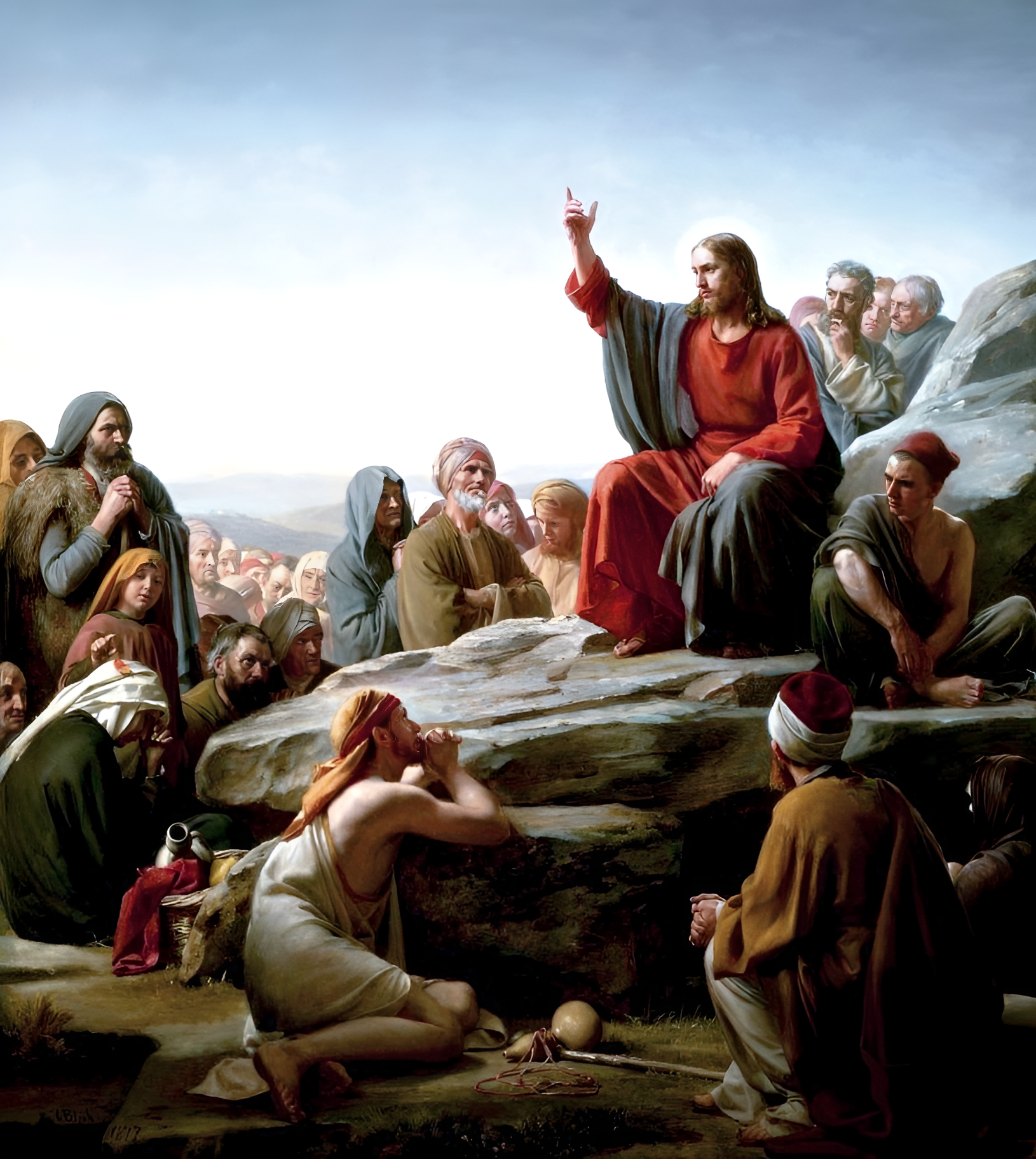
基督教相传于公元1, 2世纪时开始流传于罗马帝国统治下的各族人民之间,为耶稣所创立,初时为犹太教一个下层派别,后分裂为新的宗教。4世纪时,定为罗马帝国国教。当时的官方语为拉丁语,民间语为希腊语。中世纪基督教教会为欧洲封建社会的支柱,禁止人民思想自由,敌视科学研究。 以后基督教分为三大派别:天主教(Katholizismus)、东正教(Orthodox)和新教(Protestantismus)。
20世纪,世界基督教会联合会成立。截至21世纪初,基督徒超过二十亿人,约占全球人口三分之一,与佛教、伊斯兰教并列世界三大宗教, 并在中国五大宗教占据两席。 而天主教为首的教会,也成为世界上最大的非政府教育、医疗和慈善机构。
基督教是信仰耶稣基督为神之圣子与救世主(弥赛亚)的一神教。发源于西亚的巴勒斯坦地区,以《圣经》为最高宗教经典,信徒称为基督徒,基督徒组成的团体则称为教会或基督教会。由于部分教义源流自犹太教,因而被认为是亚伯拉罕诸教之一,现今亦与伊斯兰教、佛教共同视为世界三大宗教。其分为天主教、东正教、新教等三大宗派,但因历史发展的缘故,汉语所称的“基督教”常专指新教,基督教整体则又另以“基督宗教”、“基督信仰”或“广义基督教”称之。
基督教的共同信仰认为三位一体的独一神(汉语亦译为上帝或天主)创造了世界,并按照神自己的形像造人,由人来管理世界[1],后来人犯罪堕落,带来了死亡;圣父派遣其子耶稣道成肉身,在其在世33年的最后,为世人的罪被钉死在十字架上,在三天后从死里复活而后升天,赐下圣灵与信徒同在;他的死付上了罪的赎价,使一切信他的人得到拯救,并在神内有永生。
按照基督教在4世纪的历史纪载,第一个教会在耶稣升天与圣灵降临(约公元30至33年)后由耶稣的使徒建立,之后耶稣的使徒及信徒们不断向外宣教,并快速在当时管辖巴勒斯坦的罗马帝国境内及周边地区传播;虽曾长期遭罗马帝国政府迫害,但约于公元325年由君士坦丁大帝宣布合法化,狄奥多西大帝时更定为罗马帝国的国教,至此成为西方世界的主要宗教。之后因罗马帝国分裂后西方世界东西部的差异化发展,导致11世纪发生东西教会大分裂,形成以罗马教宗为首的公教会(天主教)、以及君士坦丁堡普世牧首为首的正教会(东正教)。16世纪时,西欧又爆发了反对教宗权威的宗教改革运动,马丁·路德(路德派)、约翰·喀尔文(喀尔文派)、乌里希·慈运理等神学家与英国国王亨利八世(安立甘派)先后脱离天主教而自立教会,日后出现了许多教义相近的教会,这些教会即为后世所统称的新教。
基督教虽起源于中东,但在7世纪创立的伊斯兰教兴起后,今日在当地的信徒人口反而居于少数。由于基督教重视传教事业(又称为“大使命”),加上西方国家自地理大发现以来对世界经济及文化发展上强势的影响力,使得基督教的传布范围遍及整个世界,基督教文化更成为世界许多文明的重要骨干。粗估统计全球超过三分之一的人口信仰基督教,至今信徒人口逾24亿,是当今世界信仰人口最多的宗教,三大宗派中又以天主教的信徒占约半数最多;基督徒最多的国家则是美国及巴西,大约占人口的75%[2][3]。
Das Christentum ist eine Weltreligion, die aus dem Judentum hervorging. Ihre Anhänger werden Christen genannt, die Gesamtheit der Christen wird auch als die Christenheit bezeichnet.
Von zentraler Bedeutung für das Christentum ist Jesus von Nazaret, ein jüdischer Wanderprediger, der etwa in den Jahren 28–30 unserer Zeitrechnung auftrat und in Jerusalem hingerichtet wurde. Seine Jünger erkannten in ihm nach seiner Kreuzigung und Auferstehung den Sohn Gottes und den vom Judentum erwarteten Messias. In ihren Bekenntnissen nennen sie ihn Jesus Christus. Der Glaube an ihn ist in den Schriften des Neuen Testaments grundgelegt. Die weitaus meisten Christen glauben an einen Gott (Monotheismus)[1] als eine Dreifaltigkeit, das heißt eine Wesenseinheit aus Vater, Sohn und Heiligem Geist.[2][3] Daneben existieren innerhalb des Christentums kleinere antitrinitarische Gruppierungen.[4][5]
Die zahlreichen Konfessionen bzw. Kirchen innerhalb des Christentums lassen sich in vier Hauptgruppen zusammenfassen: die römisch-katholische Kirche, die orthodoxen Kirchen, die protestantischen und die anglikanischen Kirchen. Mit rund 2,26 Milliarden Anhängern ist das Christentum vor dem Islam (über 1,8 Milliarden) und dem Hinduismus (rund 900 Millionen) die am weitesten verbreitete Religion weltweit.[6]
キリスト教(キリストきょう、基督教、ギリシア語: Χριστιανισμός、ラテン語: Religio Christiana、英語: Christianity)は、ナザレのイエスをキリスト(救い主)として信じる宗教[1][2]。イエス・キリストが、神の国の福音を説き、罪ある人間を救済するために自ら十字架にかけられ、復活したものと信じる[2]。その多く(カトリック教会[3]・聖公会[4]・プロテスタント[5][6][7][8]・正教会[9]・東方諸教会[10]など)は「父なる神」[注 1]と「その子キリスト」[注 2]と「聖霊」を唯一の神(三位一体・至聖三者)として信仰する。
世界における信者数は22億人を超えており、すべての宗教の中で最も多い[11]。
Christianity[note 1][2] is a Abrahamic monotheistic religion based on the life and teachings of Jesus of Nazareth as described in the New Testament. Its adherents, known as Christians, believe that Jesus Christ is the Son of God and savior of all people, whose coming as the Messiah was prophesied in the Old Testament.[3] Most Christians get baptized, celebrate the Lord's Supper, pray the Lord's Prayer and other prayers, have clergy, and attend group worship services.
Christianity began as a Second Temple Judaic sect in the 1st century in the Roman province of Judea. Jesus' apostles and their successors, the Apostolic Fathers, spread the religion across large parts of the Middle East, Europe, Ethiopia, Transcaucasia, and some other parts of Asia, despite initial persecution. The Roman emperor Constantine the Great converted to Christianity and decriminalized it in the Edict of Milan (313). He convened the First Council of Nicaea (325), where Early Christianity was consolidated into what would become the state religion of the Roman Empire (380).[4][5][6] The council formulated the Nicene Creed (325), and the Church Fathers supervised the compilation of the Christian Bible (5th century).[7] The period of the first seven ecumenical councils is sometimes referred to as the Great Church, the united full communion of the Catholic Church, Eastern Orthodox Church, and Oriental Orthodoxy before their schisms. Oriental Orthodoxy split after the Council of Chalcedon (451) over differences in Christology. The Eastern Orthodox Church and the Catholic Church separated in the East–West Schism (1054), especially over the authority of the Pope. Similarly, in 1521 Protestants were excommunicated from the Roman Catholic Church in the Protestant Reformation over Papal primacy, the nature of salvation and other ecclesiological and theological disputes.[8]
Christianity and Christian ethics have played a prominent role in the development of Western civilization,[9][10][11][12][13] particularly around Europe during Late Antiquity and the Middle Ages. Following the Age of Discovery (15th–17th century), Christianity was spread into the Americas, Oceania, sub-Saharan Africa and the rest of the world via missionary work and colonization.[14][15][16]
It is the world's most populous religious group,[17][18] with over 2.4 billion followers,[19][20][21] or 33% of the global population, comprising a majority of the population in about two-thirds of the countries in the world.[21] Today, the four largest branches of Christianity are the Catholic Church (1.3 billion), Protestantism (920 million), the Eastern Orthodox Church (260 million)[22] and Oriental Orthodoxy (86 million).
Le christianisme est une religion abrahamique, originaire du Proche-Orient, fondée sur l'enseignement, la personne et la vie de Jésus de Nazareth, tels qu'interprétés à partir du Nouveau Testament. Il s'agit d'une religion du salut considérant Jésus-Christ comme le Messie annoncé par les prophètes de l'Ancien Testament. La foi en la résurrection de Jésus est au cœur du christianisme car elle signifie le début d'un espoir d'éternité libéré du mal.
Les premières communautés chrétiennes naissent au Ier siècle en Judée et dans les grandes villes de la diaspora juive telles que Rome, Éphèse, Antioche et Alexandrie. Le christianisme se développe à partir du IIe siècle dans l'Empire romain, dont il devient la religion officielle à la fin du IVe siècle, mais aussi en Perse, en Inde et en Éthiopie. Au Moyen Âge, le christianisme devient majoritaire en Europe, tandis qu'il s'amenuise face à l'islam au Proche-Orient. Il est devenu la religion la plus importante de la planète en raison de son expansion en Amérique à partir du XVIe siècle et en Afrique depuis le XXe siècle. Il est actuellement présent dans tous les pays. En 2015, le nombre total de chrétiens dans le monde est évalué à 2,4 milliards, ce qui en fait la religion comptant le plus de fidèles, devant l'islam et l'hindouisme.
Les Églises chrétiennes sont regroupées en différentes branches, dont les principales sont le catholicisme, le christianisme orthodoxe et le protestantisme représentant respectivement 51 %, 11 % et 38 % du total des chrétiens en 2017.
Il cristianesimo è una religione a carattere universalistico, originatasi dal giudaismo nel I secolo, fondata sulla venuta e predicazione, contenuta nei Vangeli, di Gesù di Nazareth, inteso come figlio del Dio d'Israele e quindi Dio egli stesso, incarnato, morto e risorto per la salvezza dell'umanità, ovvero il Messia promesso, il Cristo.[1][2]
Insieme a ebraismo e islam, il cristianesimo è classificato da alcuni come "religione abramitica"[3][4], è una monolatria. Il Cristianesimo è la religione più diffusa, con una stima di circa 2,1 miliardi di fedeli nel mondo al 2000[5].
Il cristianesimo emerge dal giudaismo nel I secolo; alle origini si presenta con il duplice aspetto di giudeo-cristianesimo (i cui membri ritenevano che solo i circoncisi potevano essere salvati) ed etno-cristianesimo (o cristianesimo dei Gentili, che comunque devono osservare la legge di Mosè), come si desume dai racconti degli Atti di Luca e da alcune lettere di Paolo (come la Lettera ai Galati, le lettere ai Corinzi), mostrando tuttavia che le due anime convivono senza alcuna scissione, e di avere raggiunta una formula di concordia con il primo concilio di Gerusalemme (Atti 15).
I cristiani assunsero dal giudaismo le sue Sacre scritture, definite poi Antico Testamento, nella versione tradotta in greco ellenistico (anche a causa della prevalente origine greco-romana della maggioranza dei primi adepti), dottrine fondamentali come il monoteismo, la fede in un messia o cristo, alcune forme del culto (incluso il sacerdozio), concetti di luoghi e tempi sacri, l'idea che il culto debba essere modellato secondo il modello celeste, l'uso dei Salmi nelle preghiere comuni.
Il cristianesimo inteso come religione distinta da quella ebraica iniziò a delinearsi dopo il cosiddetto "Sinodo di Jamnia" in cui venne presa posizione decisa circa l'estraneità della "Via"[6] dall'ebraismo ortodosso, a partire dalla seconda metà del II secolo.
Successivamente la Chiesa post-apostolica lentamente si organizzò attorno alla cosiddetta pentarchia dei cinque patriarcati di Roma, Costantinopoli, Alessandria, Antiochia e Gerusalemme.
Inizialmente si ebbe una secolare contesa critica tra varie correnti per la formazione della prima Cristianità, correnti che si rifacevano a diverse raccolte di testi ritenuti sacri. Tale contesa terminò nel IV secolo con la conversione dell'Imperatore Costantino I (battezzato in punto di morte da un vescovo ariano[7]) il quale fece indire il Concilio di Nicea per far emergere una sola corrente ed eliminare le altre. Contestualmente la Cristianità divenne una religione approvata ufficialmente e i vescovi Cristiani, vittime in precedenza del potere militare, ne passarono al comando[8].
Nel 380 Teodosio con l'Editto di Tessalonica la rese l'unica religione ufficiale dell'impero romano ricorrendo anche a mezzi cruenti per reprimere le resistenze dei pagani.[9]
Nel 1054 contese teologiche circa i dogmi trinitari, il celibato ecclesiastico ed altre questioni minori culminarono nel Grande Scisma tra Chiesa cattolica e Chiesa ortodossa.
Circa cinque secoli dopo lo scandalo delle indulgenze spinse Lutero a causare un altro scisma e quindi a fondare il Protestantesimo.
Nell'Europa dell'est l'instaurazione di regimi marxisti, per definizione materialisti, ha avuto come conseguenza un processo di scristianizzazione pianificata di stato che è avvenuto iniziando dalla Russia (ex Unione Sovietica) e poi, nel dopoguerra, nei paesi governati da regimi comunisti satelliti dell'URSS. In seguito alla caduta dei regimi, dopo il 1989, è stata ristabilita, in buona parte dei casi, la libertà di culto.
El cristianismo (del latín christianismus, y este del griego χριστιανισμός)1 es una religión abrahámica monoteísta basada en la vida, enseñanzas y milagros de Jesús de Nazaret, tal y como se presentan en el Nuevo Testamento, que es la segunda parte de la Biblia, el libro sagrado de los cristianos. Con 2400 millones de seguidores,234 una de cada tres personas en el mundo es cristiana, por lo que es la religión más extensa del mundo.56 Los cristianos creen que Jesús es el hijo de Dios, así como el Mesías (o Cristo) profetizado en el Antiguo Testamento, que sufrió, fue crucificado, descendió al infierno y resucitó de entre los muertos para dar vida eterna a quienes crean y confíen en él para la redención de sus pecados. Las cuatro ramas más importantes del cristianismo son el catolicismo (1300 millones de adherentes), el protestantismo (920 millones), la Iglesia ortodoxa (270 millones) y las Iglesias ortodoxas orientales (86 millones). El movimiento que busca restaurar la unidad de la Iglesia cristiana recibe el nombre de ecumenismo.
El cristianismo surgió del judaísmo789 a mediados del siglo I d. C.1011 en la provincia romana de Judea. Los primeros líderes de las comunidades cristianas fueron los apóstoles y sus sucesores los padres apostólicos. Este cristianismo primitivo se extendió, pese a ser una religión minoritaria y perseguida, por Judea, Siria, Europa, Anatolia, Mesopotamia, Transcaucasia, Egipto y Etiopía. El cristianismo fue legalizado en el Imperio romano mediante el Edicto de Milán, en el año 313. El emperador Constantino se convirtió al cristianismo y convocó el Concilio de Nicea (325), en el que se formuló el credo niceno. El cristianismo se convirtió en la religión oficial del Imperio romano en el año 380, bajo el emperador Teodosio I el Grande.121314 Durante estos primeros siglos, los Padres de la Iglesia gradualmente consolidaron las doctrinas del cristianismo y supervisaron el desarrollo del canon del Nuevo Testamento.15
La Iglesia de los primeros siete concilios ecuménicos se conoce frecuentemente como la «Gran Iglesia», porque la Iglesia católica, la Iglesia ortodoxa y las Iglesias ortodoxas orientales estaban en plena comunión.16 Las Iglesias orientales se separaron tras el Concilio de Calcedonia (451) por diferencias cristológicas. La Iglesia ortodoxa se separó de la Iglesia católica en 1054 por diferencias acerca de la autoridad del papa. El protestantismo, aunque es en realidad un conjunto de denominaciones, aparece por primera vez durante la Reforma protestante del siglo XVI, y criticaban lo que percibían como importantes desviaciones teológicas y eclesiológicas por parte de la Iglesia católica.17 El descubrimiento de América en 1492 extendió el cristianismo por América. La Iglesia católica impulsó la Contrarreforma como respuesta a la Reforma protestante, a través del Concilio de Trento (1545-1563).
Algunos de los escritos sagrados cristianos son compartidos con el judaísmo. El Tanaj constituye, junto con la Biblia griega —más antigua que el Tanaj en su forma actual—, la base y la fuente para el Antiguo Testamento de las diferentes biblias cristianas. Por este motivo, el cristianismo es considerado una religión abrahámica, junto con el judaísmo y con el islam.
Algunos estudios del siglo xx no toman como fecha incontrovertible el año 33 d. C. para la muerte de Jesucristo. Hay quienes, al indagar en las fechas, sugieren que pudo haber un desfase de 4 a 8 años entre el inicio del cómputo de la era cristiana y la fecha precisa del nacimiento de Jesús de Nazaret, conocido como Cristo.18 En adición a esto, no hay clara certeza ni consenso entre estos autores de que este haya muerto a la edad de 33 años, tal como algunos textos bíblicos parecen mostrar.Nota 3 En sus primeras décadas, el cristianismo era considerado por algunos como una doctrina sectaria de las tradiciones judías ortodoxas.20 Desde que el cristianismo se convirtió en la religión oficial del Imperio romano en el siglo iv, ha influido de manera significativa en la cultura occidental y en muchas otras.
Христиа́нство (от греч. Χριστός — «Пома́занник», «Месси́я») — авраамическая мировая религия, основанная на жизни и учении Иисуса Христа, описанных в Новом Завете[1]. Христиане верят, что Иисус из Назарета есть Мессия, Сын Божий и Спаситель человечества[2]. Христиане не сомневаются в историчности Иисуса Христа.
Христианство — самая крупная мировая религия как по численности приверженцев, которых около 2,3 млрд, так и по географической распространённости — в каждой стране мира есть хотя бы одна христианская община.
Наиболее крупные течения в христианстве — католицизм, православие и протестантизм. В 1054 году произошёл раскол христианской церкви на католическую и православную). Появление протестантизма стало результатом реформационного движения в Католической церкви в XVI веке.
Христианство возникло в I веке в Палестине, находившейся на тот момент под властью Римской империи, первоначально в среде арамеоязычного населения Междуречья и уже в первые десятилетия своего существования получило распространение и в других провинциях и среди других этнических групп[3].
В качестве государственной религии христианство впервые было принято в Великой Армении в 301 году[4][5][6]. При императоре Константине I, начиная с эдикта 313 года о свободе вероисповедания (см. Миланский эдикт), христианство стало обретать статус государственной религии и в Римской империи[7].
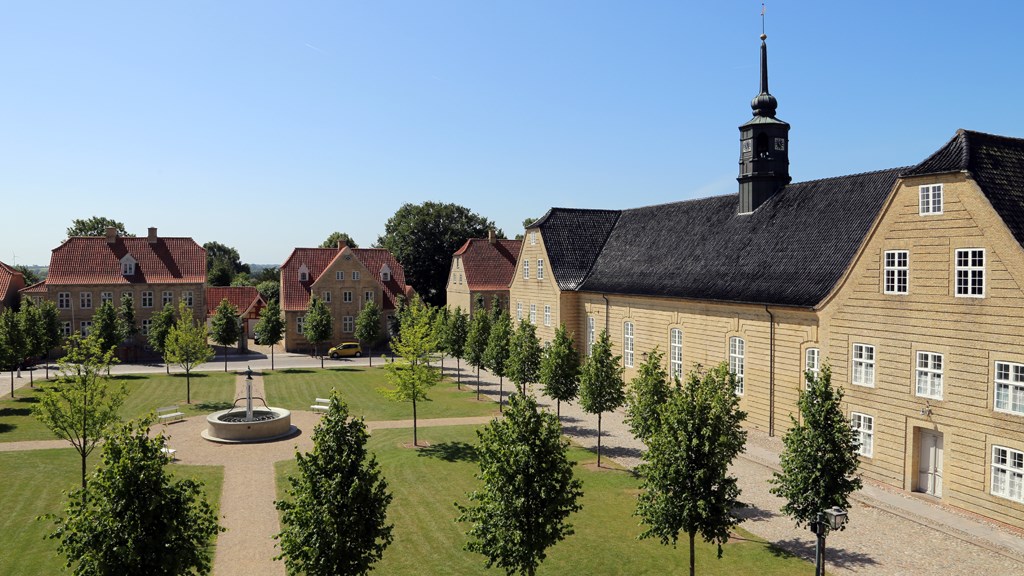
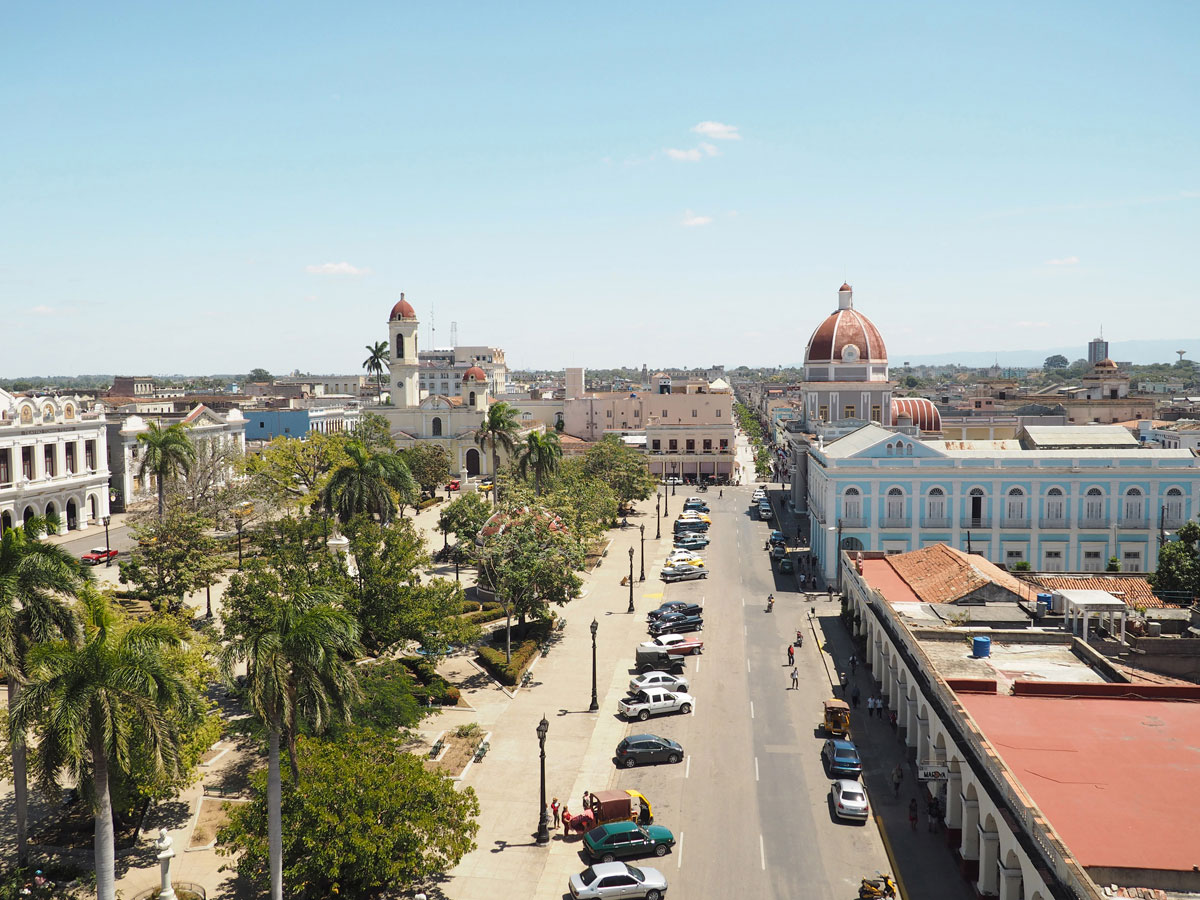

 Architektur
Architektur
 Römische Architektur
Römische Architektur

 Architektur
Architektur
 Griechische Architektur
Griechische Architektur
 Italien
Italien

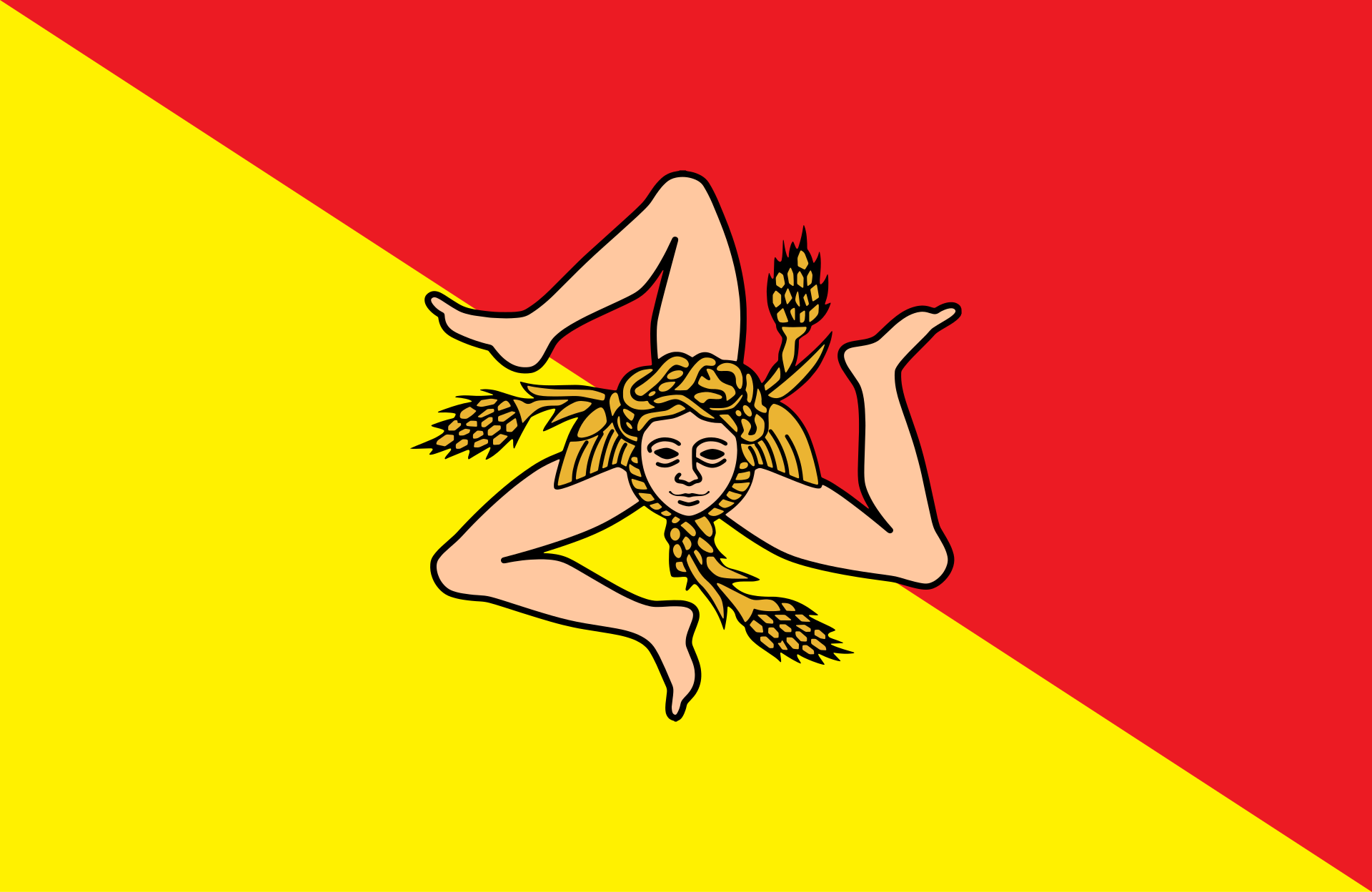 Sicilia
Sicilia

 Weltkulturerbe
Weltkulturerbe

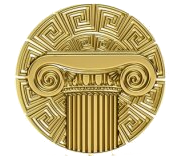 Zivilisation
Zivilisation
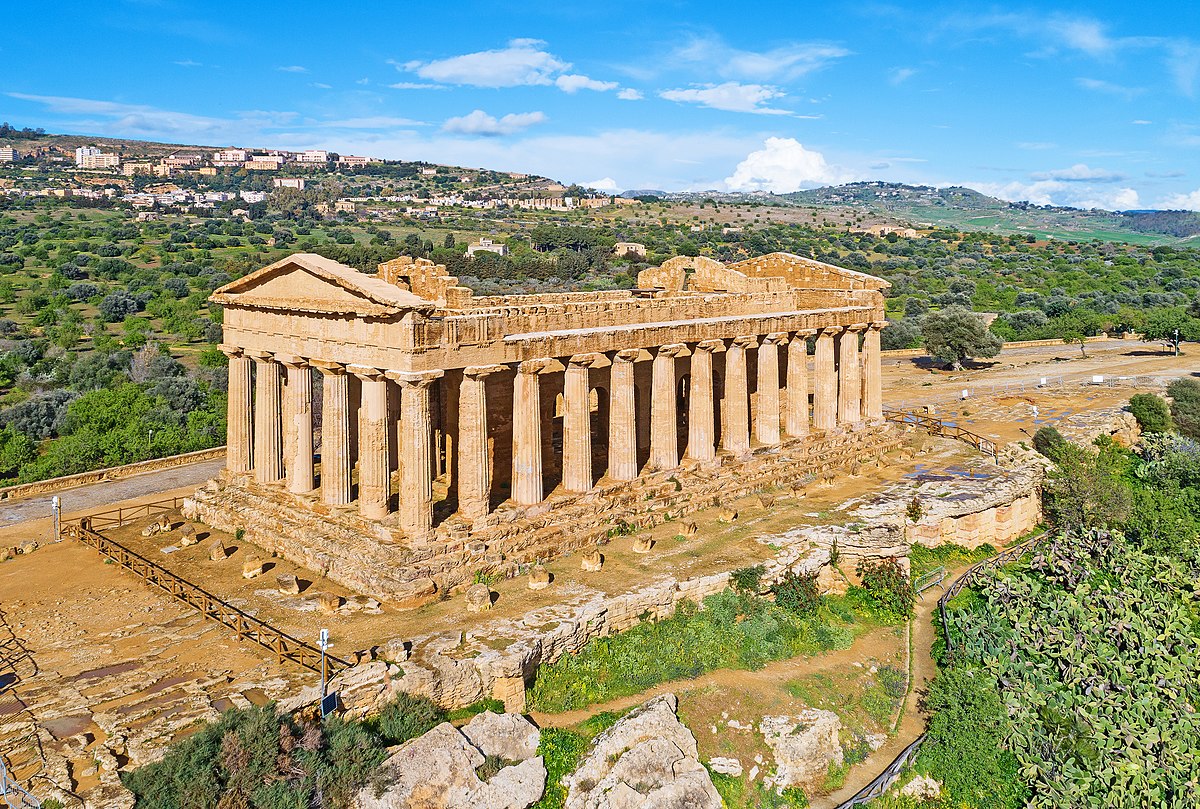

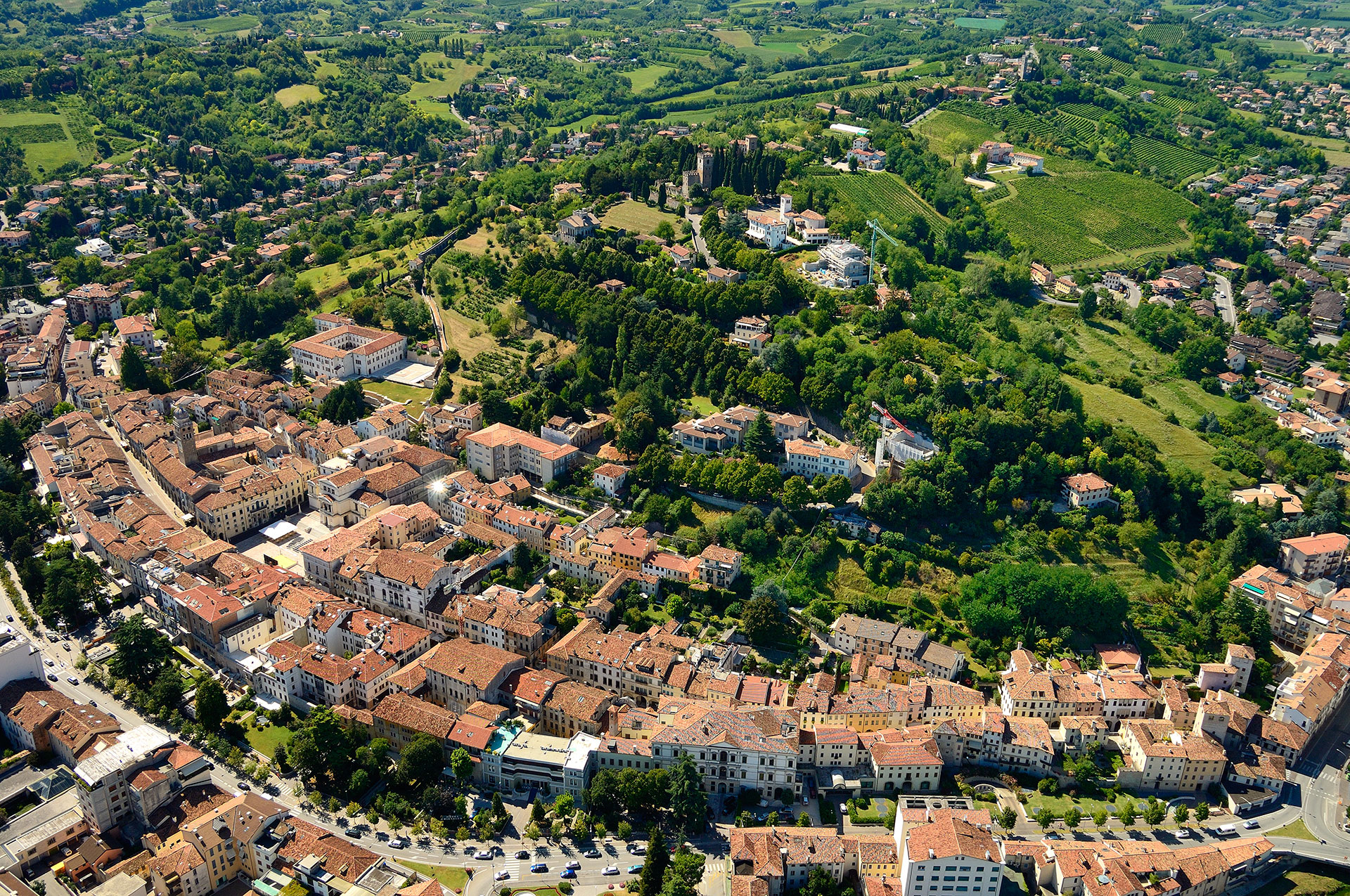
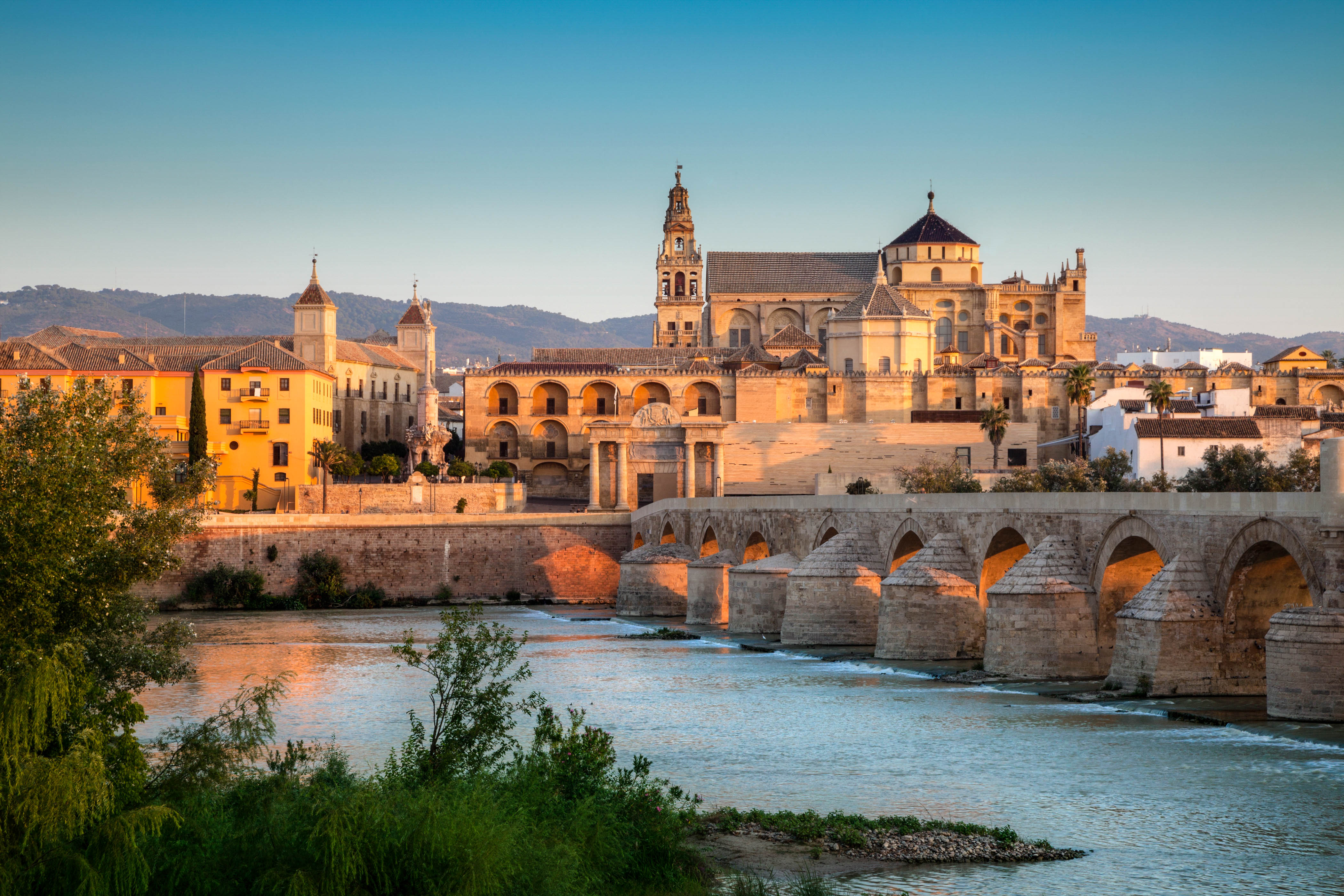
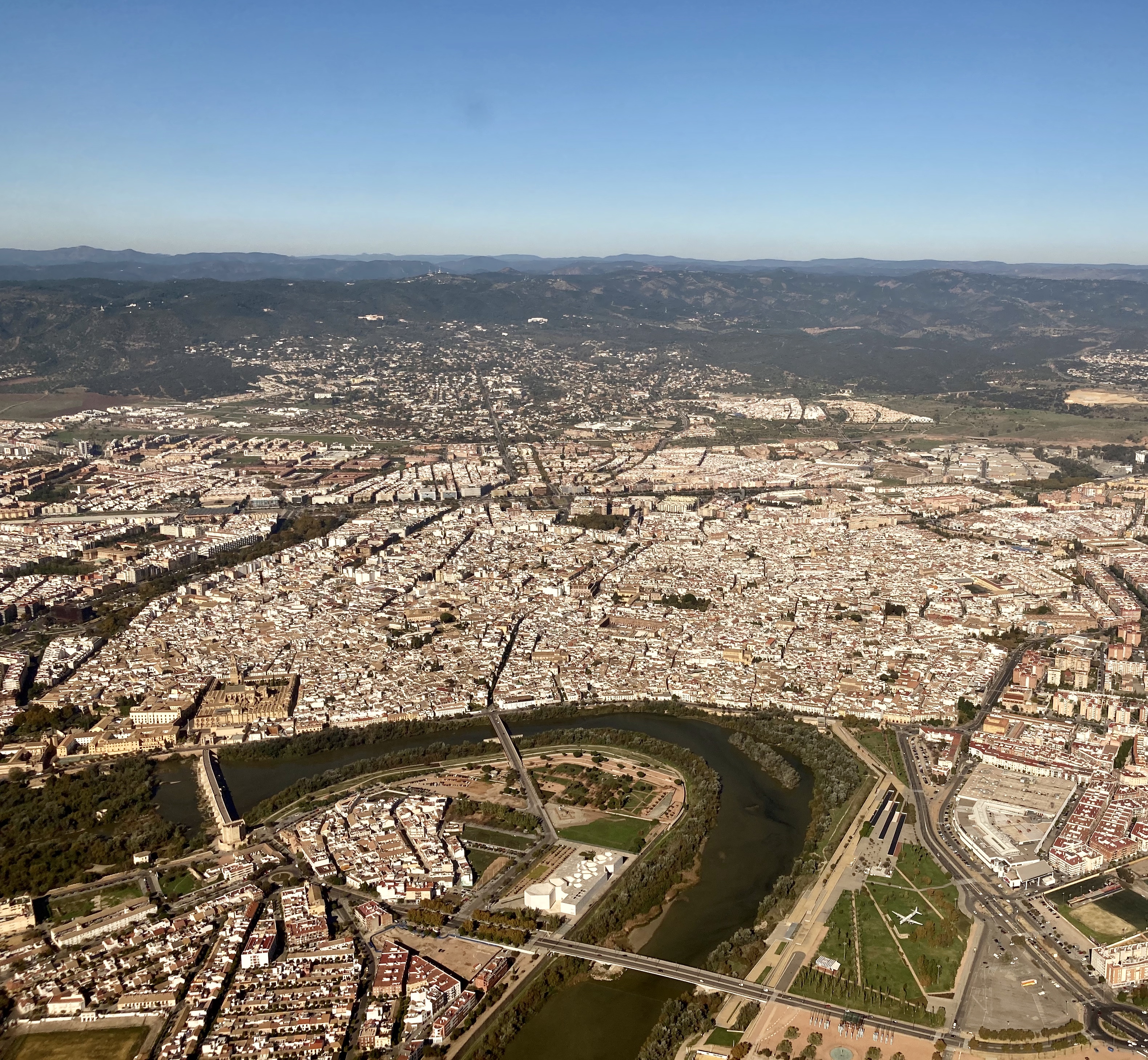
コルドバ(Córdoba)は、スペイン・アンダルシア州コルドバ県のムニシピオ(基礎自治体)。コルドバ県の県都である。グアダルキビール川に面する。
かつての後ウマイヤ朝の首都で、イスラム時代の文化を伝える建築物や街路が遺されている。メスキータやユダヤ人街を含む「コルドバ歴史地区」は世界遺産に登録されている。
Córdoba (/ˈkɔːrdəbə/; Spanish: [ˈkoɾðoβa]),[a] or Cordova (/ˈkɔːrdəvə/)[6][7] in English, is a city in Andalusia, southern Spain, and the capital of the province of Córdoba. It is the third most populated municipality in Andalusia, after Seville and Málaga, and the 11th overall in the country.
It was a Roman settlement on the right bank of the Guadalquivir, taken over by the Visigoths, followed by the Muslim conquests in the eighth century and later becoming the capital of the Umayyad Caliphate of Córdoba. During these Muslim periods, Córdoba was transformed into a world leading center of education and learning, producing figures such as Averroes, Ibn Hazm, and Al-Zahrawi,[8][9] and by the 10th century it had grown to be the second-largest city in Europe.[10][11] Following the Christian conquest in 1236, it became part of the Crown of Castile.
Córdoba is home to notable examples of Moorish architecture such as the Mezquita-Catedral, which was named as a UNESCO World Heritage Site in 1984 and is now a cathedral. The UNESCO status has since been expanded to encompass the whole historic centre of Córdoba, Medina-Azahara and Festival de los Patios. Cordoba has more World Heritage Sites than anywhere in the world, with four.[12] Much of this architecture, such as the Alcázar and the Roman bridge has been reworked or reconstructed by the city's successive inhabitants.
Cordoue (en espagnol : Córdoba, en arabe andalou Qurṭuba) est une ville située dans le sud de l'Espagne, en Andalousie. Cordoue est la capitale de la province homonyme. La ville est située sur les rives du fleuve Guadalquivir, non loin de la région montagneuse de la sierra Morena. Elle comptait 326 039 habitants en 2020, ce qui en fait l'une des villes les plus peuplées d'Andalousie avec Séville et Malaga.
La ville possède un riche patrimoine architectural et culturel, qui conserve des vestiges des différentes phases de son histoire. Dans l'Antiquité, la ville est la capitale de la province romaine d'Hispanie ultérieure pendant la période républicaine, puis de la province de Bétique durant l'Empire romain. Au Moyen Âge, après la conquête du sud de la péninsule ibérique par les Arabes et les Berbères au VIIIe siècle, Cordoue connaît une période d'expansion et de rayonnement particulier au Xe siècle en tant que capitale du Califat de Cordoue gouverné par une branche locale de la dynastie des Omeyyades. Elle redevient une ville de taille moyenne après la conquête de la région par les rois catholiques de Castille et d'Aragon au XIIIe siècle. Le Centre historique de Cordoue est classé depuis 1994 au patrimoine mondial de l'UNESCO, de même que la mosquée-cathédrale, Medina-Azahara ainsi que la fête des patios de Cordoue. Ce qui fait de Cordoue la ville du monde la plus classée au patrimoine mondial de l’Unesco1. Cordoue compte des monuments tels que le pont romain, la mosquée-cathédrale (Mezquita), le quartier juif médiéval (Judería) et l'Alcázar des rois chrétiens. Cordoue, ville des trois cultures2, est très célèbre pour ses penseurs. Les trois principaux philosophes nés à Cordoue sont Sénèque, Averroès et Maïmonide, philosophes majeurs de la civilisation romaine, islamique et juive.
Cordova (AFI: /ˈkɔrdova/[2]; in spagnolo Córdoba; in latino Cordŭba) è un comune spagnolo di 326 609 abitanti situato nella comunità autonoma dell'Andalusia, sulla riva del Guadalquivir e ai piedi della Sierra Morena. Fu la capitale della al-Andalus. Durante l'epoca d'oro islamica, Cordova fu trasformata in un centro mondiale di istruzione e apprendimento,[3][4] dando i natali a importanti filosofi e scienziati come Averroè, Ibn Hazm e Abu al-Qasim al-Zahrawi, e divenne la città più grande d'Europa, superando Costantinopoli.[5] Fu conquistata dal Regno di Castiglia tramite la Reconquista cristiana nel 1236.
Córdoba es una ciudad y municipio español en Andalucía, capital de la provincia homónima, situada en una depresión a orillas del Guadalquivir y al pie de Sierra Morena. Alberga una población de 326 039 habitantes en 2020, siendo la tercera ciudad más grande y poblada de Andalucía tras Sevilla y Málaga, y la duodécima de España. Su área metropolitana comprende ocho municipios, con una población de 360 298 habitantes en 2020, la vigésima tercera más poblada de España.5
Fundada por los romanos durante el siglo II a. C., llegaría a ser capital de la Hispania Ulterior en tiempos de la República romana, además de la provincia Bética durante el Imperio romano. No obstante, su momento álgido trascurrirá durante la dominación musulmana de la península ibérica, cuando se alzará como capital del Emirato de Córdoba, mientras que durante el Califato de Córdoba se convirtió en la ciudad más habitada, culta y opulenta de Europa y un centro líder mundial de la educación.678 Durante la larga Edad Media europea, en Córdoba florecieron las letras y las ciencias, gestándose las bases del Renacimiento europeo. Abundaron las mezquitas, las bibliotecas, los baños y los zocos, además de contar con multitud de fuentes, iluminación pública y alcantarillado durante la época de mayor esplendor califal.
Córdoba es actualmente la ciudad que más títulos Patrimonio de la Humanidad de la Unesco alberga del mundo.9 En 1984, la Mezquita-catedral de Córdoba fue incluida en la reputada lista; en 1994 lo haría el casco histórico que la rodea.10 La Fiesta de los Patios Cordobeses fue designada Patrimonio cultural inmaterial de la Humanidad en diciembre del 2012,11 y en julio de 2018 la ciudad palatina de Medina Azahara, en las afueras del núcleo urbano, fue declarada también Patrimonio de la Humanidad. Tiene uno de los cascos históricos más grandes de Europa, con 246,73 hectáreas con monumentos datados desde época romana.
Ко́рдова[5][6][7][3] (Кордо́ва[3]; исп. Córdoba [ˈkorðoβa]) — старинный город в Андалусии, столица провинции Кордова. Расположен на склоне отрога Сьерры-Морены на правом берегу Гвадалквивира в плодородной и очень жаркой местности. Кордова основана во времена господства Рима.
Сегодня Кордова — современный город средних размеров с населением 321 тыс. человек. В Старом городе сохранилось много исторических памятников эпохи расцвета столицы Кордовского халифата, занимавшего почти весь Иберийский полуостров.

昆卡(西班牙语:Cuenca,西班牙语发音:[ˈkweŋka])是西班牙的一个城市,位于胡卡尔河(Júcar River)和胡卡河(Huécar River)交汇处,为卡斯蒂利亚-拉曼恰自治区昆卡省省会。该市平均海拔946米,占地面积911平方公里,是西班牙面积较大的城市之一[1],2017年人口54,876人[2]。
市内古建筑众多,昆卡古城于1996年被联合国教科文组织列入世界遗产目录。[3]由于河川冲刷侵蚀而成的断崖险壁的壮观景致,还让它被称为“中了魔法的城市”。空中悬屋卡萨斯·科尔加达斯(Casas Colgadas)是它著名的地标,虽建于14世纪,是当时的皇家别墅,现已是一个美术馆和餐厅。主广场上大教堂也是建于13世纪,属哥特式建筑。
Cuenca (ˈkweŋka) ist eine Stadt in der spanischen Autonomen Region Kastilien-La Mancha und Hauptstadt der gleichnamigen Provinz Cuenca. Der Ort ist mit einem Standort der Universität Kastilien-La Mancha eine Universitätsstadt.
Die Region Cuenca war während der Römerzeit kaum besiedelt. Erst als die Mauren Anfang des 8. Jahrhunderts die Region eroberten, erkannten diese die strategisch günstige Lage und erbauten dort die Festung unter dem Namen „Kunka“. Noch heute ist der arabische Einfluss in der Stadt sichtbar. Die berühmten „hängenden Häuser“ (las casas colgadas) sind die faszinierendste Sehenswürdigkeit der Stadt. Insgesamt ist das Bild der Altstadt durch die Jahrhunderte von der durch die zwei Schluchten bedingten Knappheit an Wohnraum geprägt worden. Dementsprechend finden sich in der Altstadt vor allem enge, steile und kurvige Gässchen.
Der Ort ist aufgeteilt in Altstadt und Neustadt. Die Letztere besteht vor allem aus modernen Wohngebäuden. Sie liegt weiter unten im Tal des Júcar. Die Altstadt ist mit ihrer malerischen Lage auf dem Felsplateau wohl eine der interessantesten Städte Spaniens mit vielen spektakulären Aussichtspunkten. 1996 wurde die Innenstadt von Cuenca von der UNESCO zum Weltkulturerbe erklärt.
König Alfons VIII. nahm im Zuge der Rückeroberung (reconquista) die Stadt im Jahr 1177 den Mauren ab, die Spanien seit 711 beherrscht hatten. Kurz danach war Baubeginn für die gotische Kathedrale der Stadt. Weitere wichtige Bauwerke sind die Stadtverwaltung aus dem 18. Jahrhundert, der Bischofspalast und die Burg, die als Erweiterung einer arabischen Festung aus dem 10. Jahrhundert entstanden ist.

Cusco (außerhalb Perus in der Regel Cuzco; auf Quechua Qusqu oder Qosqo; auf Deutsch historisch auch Kusko[1]) ist die Hauptstadt der gleichnamigen Region und der Provinz Cusco im Zentrum des peruanischen Andenhochlandes. Sie liegt in 3416 m Höhe und hatte beim Zensus 2017 111.930 Einwohner im Stadtgebiet sowie 428.450 Einwohner im Ballungsraum.[2][3][4] Sie ist Sitz des Erzbistums Cuzco und einer Universität. Die historische Bedeutung als Hauptstadt des Inkareiches, die vorkolonialen und kolonialen Baudenkmäler und Sehenswürdigkeiten in der Stadt und ihrer Umgebung und die Lage inmitten der Anden machen sie zum Anziehungspunkt für viele Touristen.
1983 wurde die andine Stadt in die Liste der UNESCO-Welterbestätten aufgenommen. Cusco ist auch Ausgangspunkt für Ausflüge zu der etwa 100 Streckenkilometer entfernten, lange verborgenen Inkastadt Machu Picchu.
库斯科(西班牙语:Cuzco,[ˈkusko];奇楚瓦语:Qusqu,克丘亚语发音:/ˈqɔsqɔ/,科斯科),秘鲁东南方部城市,人口约有30万人,座落在Huatanay谷中(Huatanay有神圣的意思),被安地斯山脉环绕,是古老的印加帝国的摇篮。库斯科是库斯科大区及库斯科省的首府。
库斯科是一个高海拔城市,海拔有3400米(11024英尺),它的名字在秘鲁当地话中(盖丘亚语)意味着“肚脐”。1983年,城市中的古城列入联合国教科文组织世界遗产,登录名称为库斯科古城。在《秘鲁宪法(英语:Constitution of Peru)》中,列明库斯科是“历史首都”(西班牙语:Capital Histórica),乃一象征式的声明。
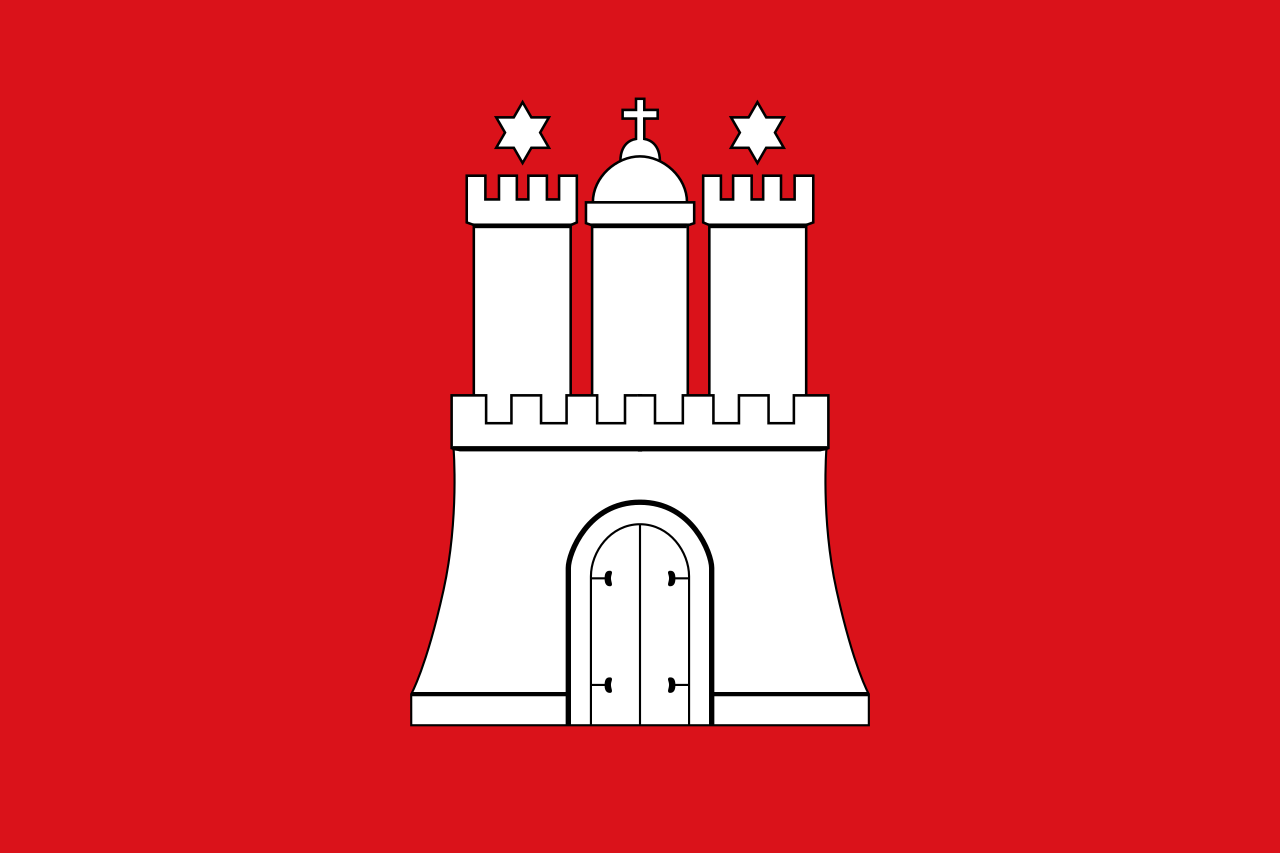 Hamburg
Hamburg
 Urlaub und Reisen
Urlaub und Reisen
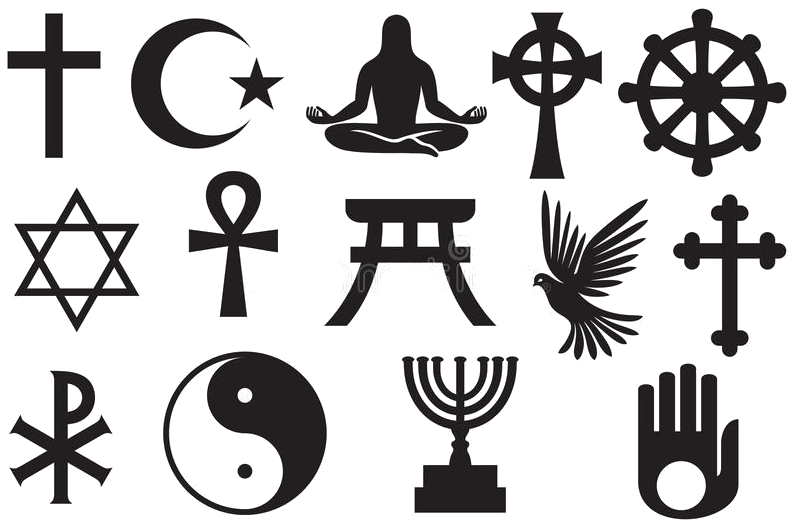 Religion
Religion
 Internationale Städte
Internationale Städte
 Wichtiger Hafen
Wichtiger Hafen
 Essen und Trinken
Essen und Trinken
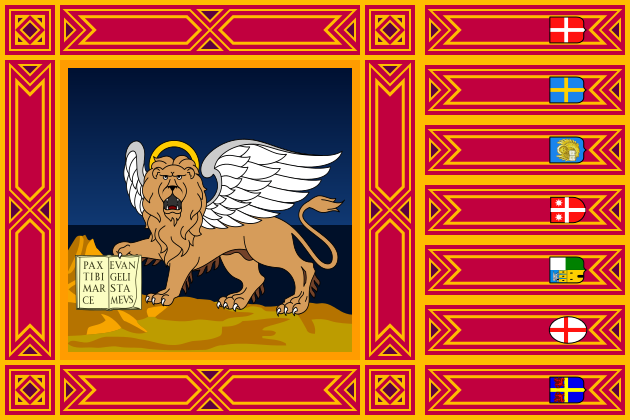 Veneto
Veneto
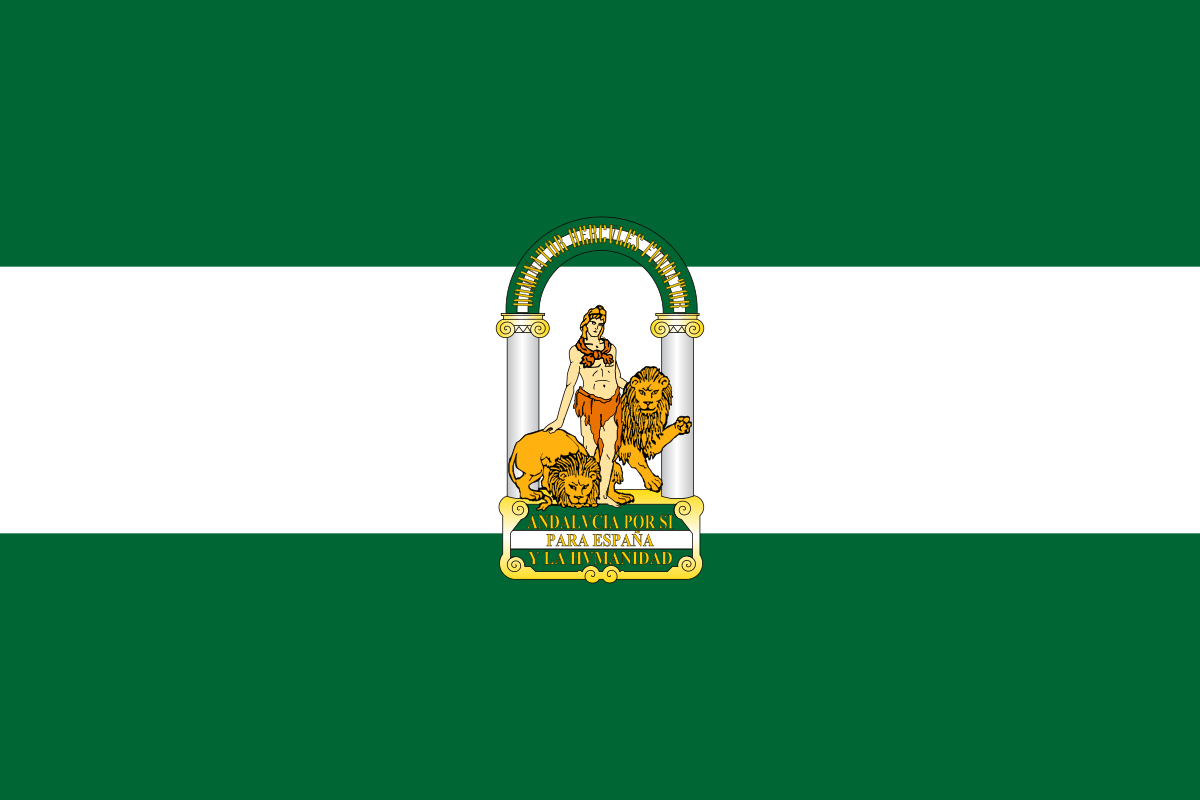 Andalucía
Andalucía
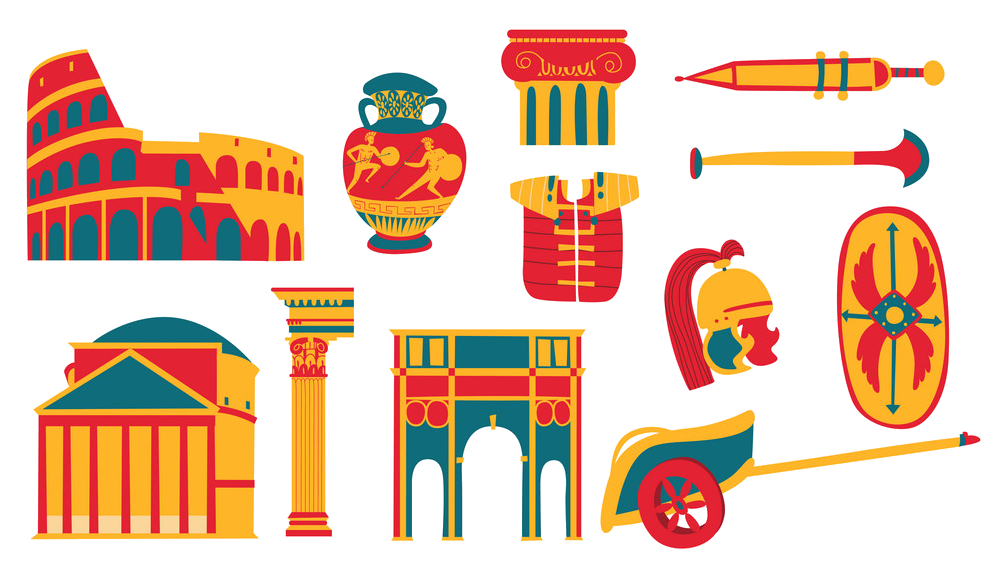 Von den Römern gegründete Städte
Von den Römern gegründete Städte
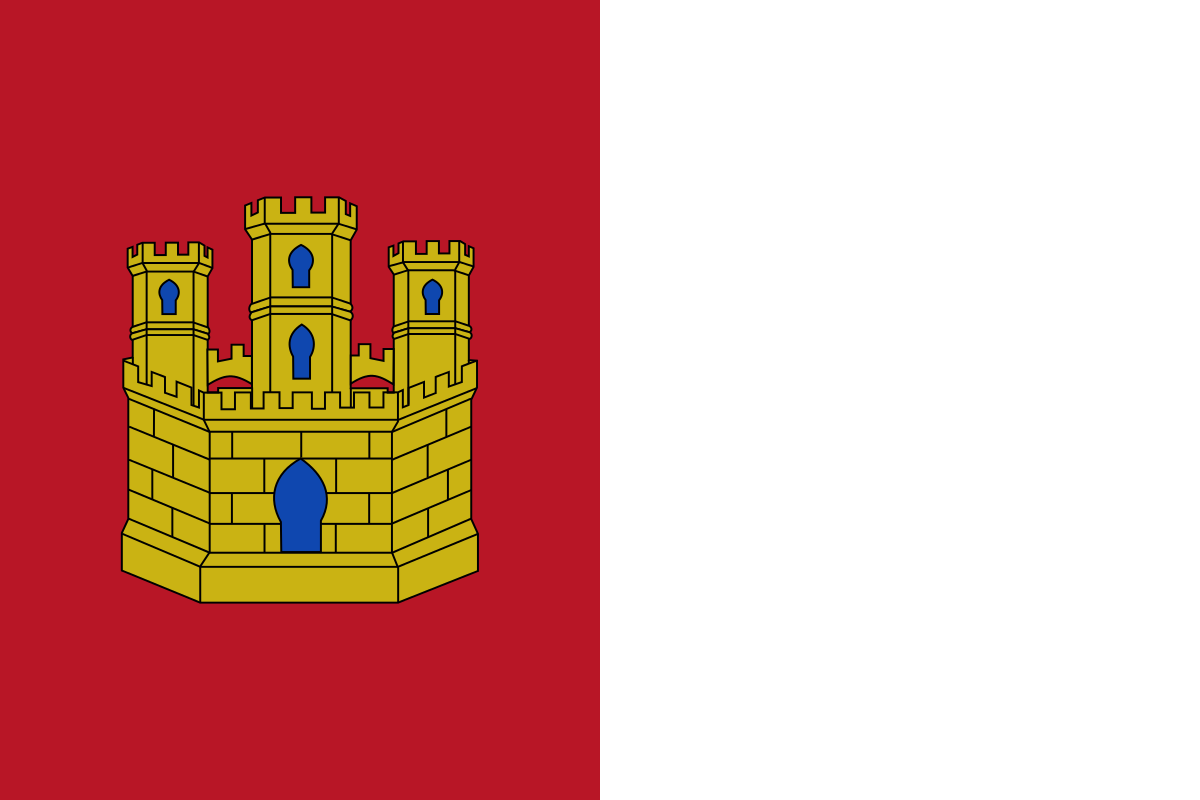 Castilla-La Mancha
Castilla-La Mancha